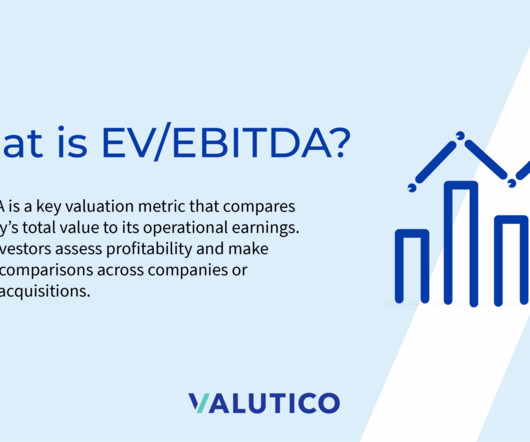EV/EBITDA Explained: A Key Valuation Multiple for Investors
Valutico
MAY 19, 2025
Key Takeaways Here are the key takeaways from this guide on EV/EBITDA: EV/EBITDA is a valuation multiple that compares a company’s total value (Enterprise Value) to its operational earnings before interest, taxes, depreciation, and amortization (EBITDA). Risk and Market Conditions: Higher perceived risk (e.g.,











Let's personalize your content